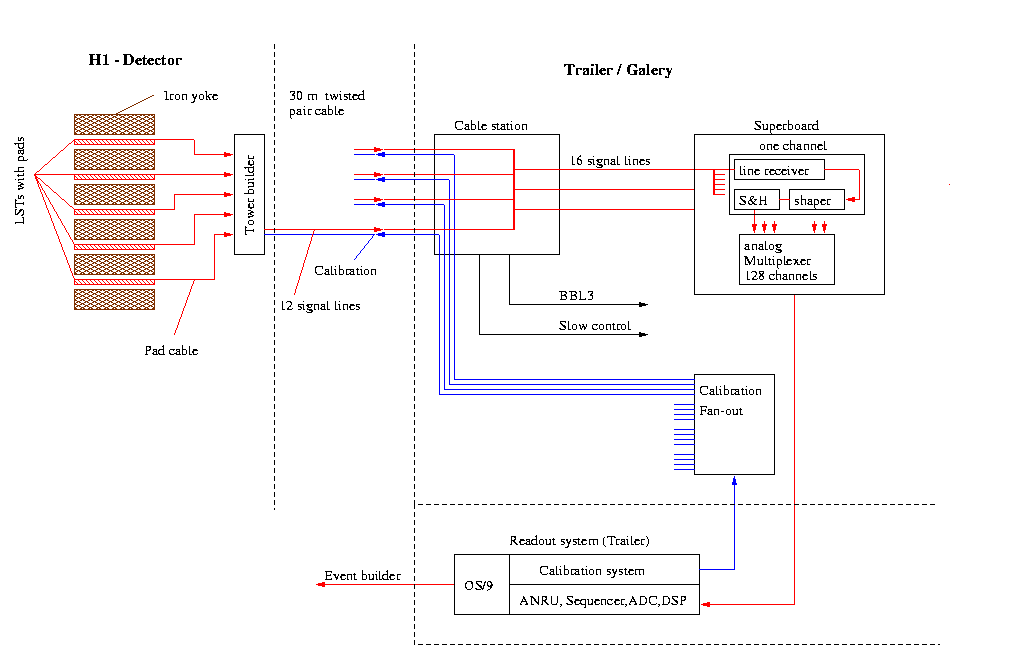
Each tower builder card consists of 12 tower builder channels two cards are housing in one box mounted onto the iron yoke. The differential output signal from the TB is sent to the cable station (CS) located on the north (south) gallery and in the trailer. The task of the CS is to reorganize the signals into groups of 16, to supply the TBs with power, to control the supply voltage of the TBs and to form the voltage level for the slow control. In addition the CS creates a BBL3 alarm in case of trouble. Further more the CSs connects the input of the active part of the TBs for the electronic calibration with the fan-outs of the calibration system. From the CSs the signals are sent to the Super boards (SB) which are located in the same racks as the CSs. Each SB consists of 128 individual channels which process the signal by a line receiver, shaper and sample & hold unit.
On receipt of a trigger, each SB passes the series of 128 channels of
analog data through differential lines to the
ANalog Receiving Units (ANRUs),
located in the bottom level of the electronics trailer (Rack D 9). Data is
transferred via 60 m long ANRU cables connecting each SB to the upper or lower
portion of a dedicated ANRU. From this point on the signals are treated
in the same way as all data from the calorimeter. The analog signals
are sent in groups of 256 via short ribbon cable to the set of ADCs. Each
ADC converts 4 groups of 256 channles each. The resulting digital signals
are processed (Pedestal subtraction, zero suppression and
correction for gain variations) by a set of DSPs and then sent to the
eventbuilder as a single partition of calorimeter data. The informations
are stored in the output bank IRTE that contains the geometric number of
the hit tower and the number of measured ADC-counts. A schematic view of the
read out chain shows the following figure.

In electronic calibration mode, precise DC levels are sent from the electronic calibration system of the LAC to calibration fan-outs (FOs) at each analog station (south/north gallery, trailer), through the cable stations into the active elements of the tower builders. The resulting analog signals are sent back through the normal data path to the CSs, SBs, and on to the ANRUs. Calibration data is not processed in the normal way by DSPs, and it emerges uncorrected after conversion in the ADCs.
During data taking and calibration, acquisition is controlled by the
LAC OS/9 system.
Last modified: Thu Sep 16 11:44:28 MET DST 1999